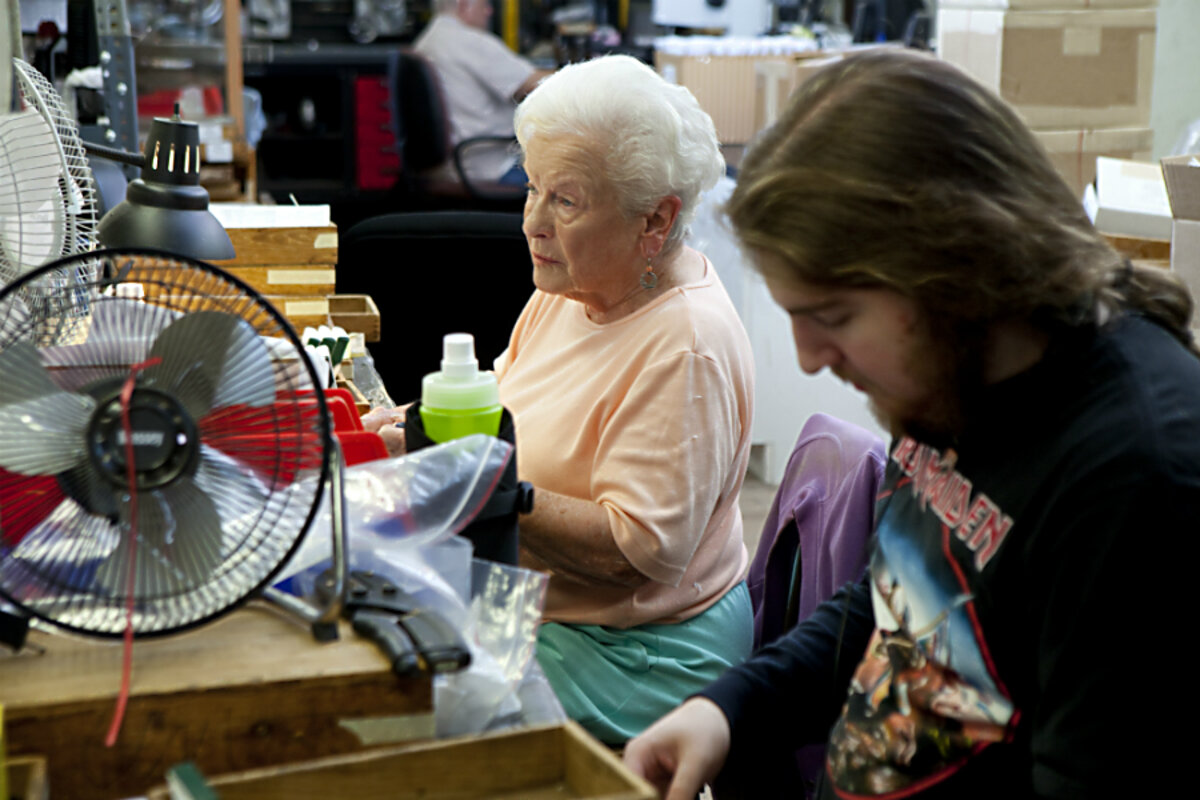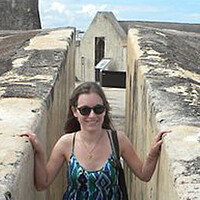Why America needs to put women over 50 to work
Loading...
Susan Collins was in her 50s when the housing market tanked, bringing her long career as an executive in the homebuilding industry to an abrupt end. “I wanted to do something else, but I didn’t really know what ‘something else’ was,” she says.
She launched a consulting business, but found herself navigating a corporate landscape that looked very different from the one in which she started. “How you market a product had become so radically different,” thanks to the dominance of the web and social media, she says. “I’m pretty good on the computer, but the shift in tools to communicate and market now is not intuitive.”
Unexpectedly, after years at the top of her field, she was adrift. “I’m thinking, what am I going to be doing for the next 30 years of my life?”
There’s no shortage of stories like Ms. Collins’s. Across the socioeconomic spectrum, female workers of a certain age face long odds when it comes to getting hired, thanks to a combination of a slow economy, a changing workforce, and lingering prejudices that can kneecap them in a competitive job-hunt. Unemployed women over 50 had a higher chance of becoming long-term unemployed (looking for work for six months or more) than any other age group – and more than male workers over 50, according to from the Federal Reserve Bank of St. Louis.
Despite these obstacles, however, they are showing up in the workforce in greater and greater numbers. In fact, labor participation rates of women over age 65 have more doubled over the past 25 years, while rates of other age groups have declined. By 2024, 6.3 million, or one in five, will work past age 65, the Labor Department predicts.
Much of the problem stems from the fact that our current structure of work and retirement was designed “in the middle of the last century for men with homemaking wives. It doesn’t work anymore,” says Phyllis Moen, a sociology professor at the University of Minnesota and the author of “.” “Women are the fastest growing group in the workforce, and they’re staying in longer.”
Some employers are finding that it's in their interests to capitalize on that growing talent pool. And promising models of career development after 50 or 65 are emerging.
Two big examples: On one end of the labor market, the growth of more piecemeal, on-demand job structures is proving to be a good fit with many older workers of all income and education levels. On the other, the nonprofit sector is experimenting with pathways for accomplished career women like Ms. Collins. The nonprofits tap into people with skills and experience, while those who are hired often find low-risk opportunities to reinvent themselves.
Older women are right at the crossroads of many of the biggest changes in today’s labor market. The Great Recession wiped out savings for a huge swath of late-career workers, as fixed pension plans were also vanishing. Out of necessity, millions of Americans are now working through their 60s and 70s.
On top of that, women are far more likely to have gaps in their employment history, from taking time off to care for children or an older relative. “Even if they didn’t take time off they’re discriminated against,” Professor Moen says.
Another issue: Strides have been made toward equal pay, but women have earned less than men for decades. Therefore, Moen points out, they qualify for less in Social Security and smaller retirement packages, meaning financially they have to work longer than their male peers. A 2015 from Financial Finesse, a financial education firm, found that based on Labor Department wage data, the median 45-year-old woman is nearly twice as far behind as her 45-year-old male counterpart in terms of saving the money she’d need to retire by age 65.
Opportunities that aren't 9-to-5
Finding a job at all, let alone a new career after decades of work, can be tough. In 2009, The Sloan Center on Aging and Work surveyed hiring managers at several state agencies, who outlined reasons that typically led them to reject older workers: assumptions of burnout, resistance to new technologies, productivity loss due to health issues, and poor cultural fit with younger workers among them.
Additionally, women in their 60s and 70s are more likely to need time off to care for an ailing spouse or grapple with health problems that require them to work more limited hours.
But there’s a silver lining on that front. In one huge way, the job market is changing in a manner that suits older workers quite well: It’s becoming more flexible. By some estimates one in three US workers is self-employed, and companies increasingly rely on independent contractors for a wide variety of jobs. This has major drawbacks for younger workers who would prefer a full-time gig – no employer-sponsored health insurance, no vacation days, and no clear path to advancement.
But for seniors who qualify for Medicare and can’t, for whatever reason, work a full 9 to 5, driving for Uber or renting out space on Airbnb on their schedule is a better fit. Uber says that one in four of its drivers is over 50, and the ride-hailing platform recently partnered with Life Reimagined, an AARP subsidiary, to recruit more drivers. As the gig economy expands, for better or worse, those avenues of supplemental income will as well.
A new start, nonprofit style
For women who still want or need a full workload, however, certain organizations are experimenting with an intriguing model: late careers for social good. Collins, the building executive, found her second act this way. Dissatisfied with consulting, she got involved with her local chapter of The Transitions Network (TTN) a national community network for women over 50 dealing with life changes, from an empty nest or divorce to career changes. Soon, she joined the organization's steering committee and began helping out with communications and marketing. That led to her new gig, in 2013, as TTN’s executive director.
“There’s a natural tendency for me to want to get my hands on something and make it better,” she says. A chief objective of TTN, whether through career services or purely social gatherings, is to nurture that very impulse in its members. “They don’t want to be superfluous to the process. They want to matter. It’s not just about filling the hours.”
In addition to TTN, nonprofit groups like ReServe in New York and Encore in San Francisco are working out paths to public service those who have worked for decades in the corporate realm.
In 2009, Encore launched a fellowship program that matches accomplished, older workers with leadership positions in the nonprofit sector. They work part-time, for a small stipend, with the goal of bringing their many years of experience to bear in a new environment. In many cases, fellows work with startups in the nonprofit realm and help them shape operations.
“They essentially become staff, and do something where their background is really relevant,” says Encore executive vice President Jim Emerman. “If they were in [Human Resources], maybe they develop a talent acquisition program. It gives the institutions access to a needed source of talent, and [fellows] the experience of how their skills can work in a setting that they aren’t quite familiar with.”
From Goldman Sachs to Green City Force
To date, Encore has matched more than 250 fellows with nonprofits. The structured avenue of transition the program offers was key for Donna Garban, who worked for 25 years in investment banking for Goldman Sachs. Her 2013 Encore fellowship paired her with Green City Force(GCF), a Brooklyn, N.Y.-based AmeriCorps affiliate that helps low-income workers train for and get clean-energy jobs.
“There’s a huge difference in how the two worlds work,” says Ms. Garban, who used her experience in the financial industry to help Green City Force find and secure new partners and job contracts.
“Things move glacially [in the nonprofit world], and mine was as much like a startup as you’re likely to see. I had to get used to things like figuring out the copy machine or setting up a Kinko’s account. You’re not doing that in your 25th year at Goldman Sachs,” she laughs.
Shortly into Garban’s fellowship, the nonprofit’s CFO quit, and she was instrumental in finding a suitable replacement – who was also a member of Encore’s fellowship network.
“She was able to understand the process of looking at candidates, how to screen, and all of that,” GCF executive director Lisbeth Shepherd said in a 2015 case study of Encore fellows working in various roles. “Before Donna, the organization had never had a ‘senior person.’ She brought some seriousness and depth of experience to the organization at a critical time.”
Garban left GCF once her fellowship ended and opened up an independent bookstore – but not before hooking up the organization with yet another Encore member.
The experience, she says, was crucial in helping her move on from her earlier career. She thinks the model of paired fellowships, intern programs, and even entry-level jobs could work as a way for organizations across industries to make use of experienced workers who aren’t quite ready, for a variety of reasons, to hang it up for good.
“It’s hard to find an employer that will be patient enough. Let’s face it: You can’t see as well, you don’t know the latest technology,” she says. “It’s a lot like training an intern, in that it takes time and patience on both sides. But I learned so much in a year. It was energizing.”





